The Wusthof Classic was the second knife that I used while working in a french restaurant. The first knife I worked with was Zwilling ”Traditional Chef’s Knife”. The Wusthof Ikon is the newer version from Wusthof, they have updated the handle design. But is the handle a real huge improvement? That is what you will find out in this article.
Wusthof ”Ikon” Classic
The ”Ikon” series from Wusthof is the newer series with updated handle design. Compared to the just ”Classic” version the only difference is the handle. The knife itself performs exactly the same. Don’t get confused with the full-bolster version which I don’t recommend. The Wusthof Ikon is a traditional chef’s knife in terms of knife profile. The knife itself is exactly what we expect from a western-style chef’s knife
Wusthof ”Ikon” Classic Balance point
The western-styled Chef’s knife is usually heavier than the Japanese ”fusion” and ”traditional” Gyuto versions. The primary recommended gripping style is the pinch grip. Since it is a western chef’s knife our primary cutting style is the ”rocking” motion. Therefore I want the knife to be back heavy to accommodate the rocking motion and the weight of the knife also helps with the cutting force. If you pinch grip the blade, cap or at the handle then the knife will be back heavy.

Wusthof Ikon Handle Design
The interesting part about the new Wusthof Ikon knife is the handle design. The handle design is an improvement only if you are actually using a handle pinch grip. If you are accustomed to the pinch grip at the blade then the Wusthof Classic is a better option over the ”Ikon” if you compare the price.

Wusthof Ikon Steeltype: X50CrMoV15
The premium series from Wusthof uses X50CrMoV15 steel. This steel type is a stainless steel type. The Rockwell is 58 this is a good hardness that won’t chip so you ideal for heavy-duty work.

If you have any questions or want to add your feedback/review leave your comment behind in the comment section below.
▶ If you want to know what knife you should buy you can read the following article ''Choosing your knife''. ▶ On my youtube channel, I have reviewed a lot of different knives. You can watch the playlist by clicking here. ▶ Click here, if you want to search for other kitchen knives on: Amazon. ▶ , if you want to search for other Chinese knives on . ▶ Check out my gear on Kit: https://kit.co/ChefPanko ▶ Check out my recommendation on Amazon: https://www.amazon.com/shop/chefpanko Full Disclosure: If you purchase from these links I get a small commission that goes towards supporting the channel and website. As an Amazon Associate, I earn from qualifying purchases ▶ If you have any questions about Japanese knives made in China or about some of the brands feel free to ask it in the comment section below. Thank you for your support and feedback. ▶ Want to work with me? Please use the contact form by clicking here.
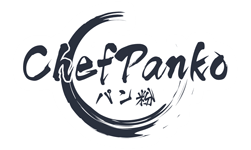
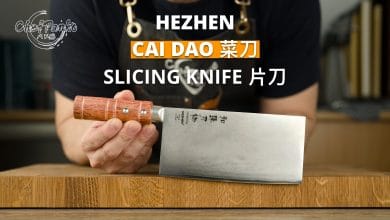
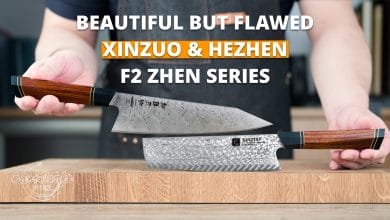
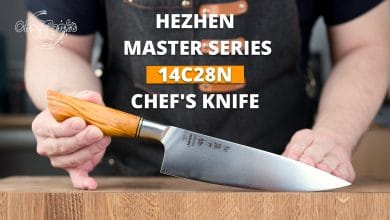
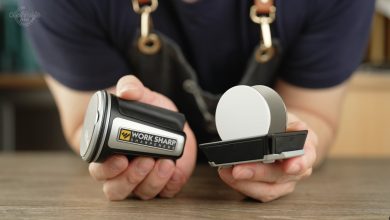
Hello,
Is it normal for a new, out of the box Wusthof Ikon Classic Chef’s knife to have about 2mm of tip deviation to one side?
Thanks!
While a slight deviation in the tip of a new knife isn’t uncommon, 2mm on a Wüsthof Ikon Classic Chef’s knife is definitely noticeable and worth looking into.
As Mr Zamin says, it is uncommon. There might be a manufacturing error or it might have been dropped during shipping. How was the box and was the knife still held in its place? They design the boxes to minimize shipping damages. Tip bending and chipping can happen if dropped or landed wrong.
Thanks for replying! The parcel and knife packing looked intact, although there were some slight bending marks on the packing at the tabs at the ends, indicating that I wasn’t the first customer to notice the issue. The deviation begins around the middle, and gradually curves towards the tip, so it’s likely that it’s like that from the factory (bad tempering?).
A big black mark for Wusthof as they claim to provide “lifetime warranty against manufacturer defects”, however after contacting them through all possible channels (website form, email, social media), the only reply I got was from facebook saying “send an email to info@…”, which I had already done beforehand with no reply.
Finally I got a positive reply from the seller, who promised to provide a replacement after receiving the bad one. A seller which seems to have a lot of negative feedback online (yeah, I’ll do better research next time…) but I’m keeping my fingers crossed that it will work out ok.
Hope it works out in the end for you. I was not aware that Wusthof has a lifetime warranty (which probably has a lot of fine print on it).
In the Netherlands, we have to go to the original seller for any warranty claim and we have a 14-day no-question return policy (which some shops don’t honor which we as consumers can file a complaint on certain channels). But most of them that don’t honor the return policy are those on the verge of going bankrupt or are a fraud.
And we have the regular 2-year limited warranty claim which means only factory defects.
Have seen more companies with limited lifetime guarantee claims which they only honor if you order from them directly. I have a Yoga Matt, for example, they have a lifetime Guarantee ”meaning 10 years after reading the fine print” and some criteria before they accept the claim.
But hope your problems get resolved, I also find that companies reply faster when you go on social platforms for some reason or it can be just me.
What you mentioned to have in the Netherlands regarding returns and warranty is mandatory for every country inside de EU for private customers, however it gets tricky when buying from one country to another.
The Wusthof lifetime warranty is listed on their website- it has no fine prints- they claim to handle anything having manufacturing defects, however they ignored all my requests. I have contacted them on Facebook, Instagram, the online form on their website and email. The only reply I got was from Facebook, saying I should send them an email- which I did and then got no reply.
The good news is that seller proved to be honorable (despite the multiple negative reviews they have online) and sent me a replacement knife which finally arrived today.
The bad news is that while the replacement knife is much better it still has some slight deviation of the tip (around 1mm), and also the sharpening profile is quite unevenly shaped (the wheatsone will even it in time but still…). Also the bolster does have machining marks deep enough to catch the nail all over it.
Keep in mind that I do own what my lady calls “an exaggerated number of knives” with both cheaper and more expensive models and while none of them is 100% perfect and straight like a machinist edge, Wusthof Classic Ikon has the roughest finish.
Don’t get me wrong, it’s not the worst knife in the world- I do like the overall weight and feel, the out of box sharpness and the fact that I got it for a good price, it’s just that is not what one would expect from a brand of this caliber, and 100% not worth the list price.
Some online research suggests that their main German competitors suffer from the same issues. Perhaps it’s just a combination of corporate greed and the society overall having more superficiality and narrower attention span. Why not just push inferior products when 99,9% of customers will not not even notice anything more than “the best brand” written on the packing?
Tl;dr: Wusthof has poor quality control, they are aware of it and therefore ignore the requests for the “lifetime warranty”.
Glad that Wusthof provided you a satisfactory replacement. I’ve had very different experiences with Wusthof USA, and their premium franchise representative Wiliams Sonoma. It was Williams Sonoma that allowed me to hold the knife face to face and inspect it before I purchased it–and gave me confidence to purchase three more as gifts to thrill my friends and family. I still use and enjoy my 8″ Classic Ikon Chef knife at home.after 7 years. No regrets.
Wusthof did not send anything, they didn’t even reply… it was a random seller from the internet…
So basically what is the best way to sharpen a Wustof Classic Ikon knife? Is it considered a Japanese blade or a European blade? We have a black Wustof pull through sharpener, I’m not sure it’s the correct one.
The Wusthof Classic Ikon is considered a western chef’s knife. It is thicker and weighs more than a Japanese knife.
While pull-through sharpeners work for softer steel like the Wusthof, it is essentially a tool to make it easier for home cooks to get a decent edge.
It is not the best option but an easy solution/ quick fix to get a decently sharp edge.
Something like an electric sharpener will get better results than a pull-through sharpener to get a better edge.
The best way is with a whetstone, but this requires knowledge of why and how and experience to get a good edge. I encourage everyone to learn how to sharpen on a whetstone manually. (planning to make a whetstone sharpening guide).
Here you can read more about whetstones: http://www.chefpanko.com/maintenance-sharpening/
Sorry for the late reply.
Is the edge angle 15 or 20 degrees on this knife?
This one the Wusthof Ikon Classic (14º) and Zwilling Pro Traditional Profile (15º).
They no longer come with a 20 degrees angle however they add an invisible micro-bevel with a higher angle to add edge retention out of the box.
This will result in a few confusion to consumers that know how to manually sharpen.
They will question why an angle of 14/15º can hold the edge longer out of the box compared to manual sharpening on the same angle.
They simply did not add a micro bevel on an edge that could not be held at the factory 14º angle (and you can’t blame them since they added an invisible blended in micro bevel that they don’t advertise with).
This is marketing since the majority of the consumer has the assumption that the lower the angle the better the knife.
This will result in a few things, you can hone the knife more often before needing whetstone maintenance.
But you will also reduce the lifespan a bit faster since you remove more material on a knife that can’t hold the sharpness of a lower angle.
So the manufacturer is happy since they can advertise with a lower angle and the knife lifespan is shorter, resulting in that the consumer needs to replace their knives a bit sooner.
My recommendation of the angle is written on this page per knife style and Rockwell hardness:
http://www.chefpanko.com/best-sharpening-angle-for-kitchen-knives/
I believe that the mysterious “micro bevel” that Wusthof uses, is, or is similar to a convex bevel rather than a flat bevel. The maintenance they encourage most is a honing steel–provided with almost every set of knives that they sell. It reshapes the blade rather than taking off metal. Further maintenance is often provided by a pull through sharpener that actually touches up by removing some metal.
I’ve found that I can maintain sharpness and the convex bevel with a loaded strop. You’ve demonstrated another way by using the Worksharp electric sharpener.. It maintains the convex bevel at 17 degrees–a compromise between the original Wusthof 15 degrees and your straight angle 20 degrees.
Wusthof is also in the middle of rebranding (New Logo).
If I’m correct everything should be the same only a new logo since the old one is outdated.
So mostly a rebranding.
– So new logo on the handle and blade.
– and new packaging design with the new logo.
Many manufacturers (a lot actually) are advertising 14°/15° or lower angles (even on less expensive blade steels). The actual edge angle is usually higher than advertised. This is often caused by a final honing or refining operation at the factory at a larger angle than the initial sharpening operation. While being so small that it needs sophisticated instruments to measure, this micro-bevel does increase the strength of the cutting edge and reduce edge rolling in practical use.
15 on each side for a total of 30 degrees.
I not only reviewed your “How to buy a Nakiri,” but all the other individual reviews you have done, because I’ve been looking for an upgrade for several years. But each time I find one to buy, I realize how much I like the one I have. My Kai Seki Magoroku Nakiri is more than 20 years old–and should be easy to beat. It was given to me when I was in Japan to use while I was there—and I didn’t take it very seriously. It has an identical profile to the modern Shun product lines from $100 (Shun Classic) to $350 (Shun Fuji).
So, what do I gain from the Shun classic? Vg-10 steel, Damascus, full bolster, special D handle.
Except
Mine already has quite hard (Rockwell 58) steel—less likely to chip
Damascus can be disfigured by scratches
Full bolster forces pinch grip
Handle favors right handed and I’m a lefty
And
My real wood slight oval handle is beautiful and simple (allows multiple hand positions)—easy to maintain
Wood handle base can be used to crush ginger
Easy to sharpen—small chips easy to fix—scratches hard to see–holds edge
Compared to Chinese nakiri knives you tested, my profile is much flatter—with a tiny bit of curvature at the tip to allow rocking motion. Except for your Mcuata Zanmai, the knives you tested were closer in price to my humble Seki Magoroku, but much flashier in appearance. The Mcusta Zanmai nakiri is visually stunning with a great classic profile, but none of them seem like a nakiri to me any more.
These days, I’m leaning toward a nakiri/cleaver hybrid, maybe like the Shun Kanso 7” Asian Utility knife: https://www.cutleryandmore.com/shun-kanso/asian-utility-knife-p135146
If a knife works for your preferences it will be hard to find a different brand/replacement 🙂
You are so accustomed to the knife that in most cases, it is better to buy the exact same knife again as a replacement.
I love wooden handles and still the best feel out of all the other material.
Yeah, the Chinese Nakiri’s profile is indeed different.
That Shun Kanso looks amazing, and I love that they added a tip area
And a complete solid AUS10A core, wish that they offered it here in Europe.
We only have Classic, Nagare, Premier, Pro, Wasabi, Seki Magoroku.
For others, I have to import it from Japan or the USA.
(or in some cases I need to travel to a different city since I don’t have a specialized Japanese knife import store nearby but they also do not offer a broader range of Kai Shun either at least the last time I visited. They do offer a lot of handmade knives from the individual blacksmiths and they don’t list them on their webshop since they only have limited stock).
Chef Panko, So far, you’ve concentrated on low end bargain Chinese knives. Is there a “high end?” Let’s consider the Wusthof Classic Ikon 8 in. and your 7″ Shun Classic Santoku to be standard setters for quality Western and fusion Japanese knives. Are there any Chinese knives in that league?
Here a candidate. For the USA, Cangshan has Wliams-Sonoma promoting them:
https://www.williams-sonoma.com/products/cangshan-tc-series-8inch-chefs-knife-with-wood-sheath/?pkey=cbrand-cangshan&isx=0.0.1171.199951171875
https://cangshancutlery.com/en/
They use Sandvik Swedish steel. Maybe you can get a chance to test the $100 chef’s knife?:
There definitely are it took a lot of testings and knives series/ brands to find those gems on AliExpress.
But that is one of the problems of the Chinese branded knives, I simply can’t say that a brand will sell the same quility across all their knife series.
Companies/ brands that are rapidly building a brand name for themselves are a slight exception (some of them had a rough start in terms of quility control).
An example is Sunnecko/Keemake, Keemake is their newest series also higher priced.
Keemake AUS10 was better than the Sunnecko VG10, The Rockwell difference is not a lot but noticeable.
Keemake HRC: 60 (pretty much on spot).
Sunnecko VG10: 59/60 (around 59.5 or higher but in terms of my testing not quite 60 yet).
But then you have Keemake German Steel series, while pretty decent for the price but compared to a Wusthof it comes no way near it in terms of quility.
Problem is that the knuckle clearance is significantly less and the durability aspect in terms of thickest spine measurement is also a lot thinner on the Keemake German steel version.
But then you have the Xinzuo 440C, compared to the Wusthof or Zwilling I would say it comes extremely close.
The only difference is probably the thickest spine measurements in which the Xinzuo one is slightly thinner (Only tested the Xinzuo Nakiri 440C but based on that knife I really want to test the Chef’s knife version).
Edge retention on par with Wusthof, and everything else coming extremely close for $30/$35 so combined with the price I would go for the Xinzuo 440C over the Wusthof and the Zwilling.
The same for the Chef’s knife from Keemake AUS10 series, I would get that over the Shun if you compare the price of $60 from Keeamke vs $120 from chef’s knife from Shun.
Terms of quility it is coming extremely close to a Tojiro VG10 Rockwell of 60.
But there is also a lot of improvement needed from the Chinese brands, I have tested a lot of unknown brands and a lot of them need to improve a lot of things.
Since those small things make a huge difference and many Japanese knife makers would not sell or give it an ”approved” rating.
– No spine distal taper, this is common by a lot of Chinese unknown brands but also have seen a $15 knife that has it while the $50+ did not.
– Wrong balance point
– Not enough knuckle clearance on the Chef’s knife, Santoku, Nakiri
– Strange knife profile (in my eyes a factory defect and should not get an ”approved” for sale rating)
– While I like that they experiment with different knife aesthetics, comfort and profile some are extremely questionable (simply looks like a bad copy of an existing knife).
– The designers of their product focus too much on aesthetics over function (spoken to some of the Chinese brands and they are taking my feedback for the newer series).
– Edge retention (while for a lot of the $50+ knives had similar Rockwell which I’m satisfied with around 60), a lot of unknown brands sell the same core material with a significantly lower Rockwell than they claim some are even 56 or lower while selling it as a Japanese VG10 this is in my eyes unacceptable and that is what I made clear in some of the reviews).
As for the brands that are getting more traction in terms of brand recognition, most of them have all the problems fixed (however this does not mean that the earlier series/ stock that they have has the fixes in place so those are probably in a discount).
However, the price range is also significantly higher because they had to promote the brand name (but then you are competing against the Japanese knife brands and with the bad stigma around ” made in china”).
I also got a brand deal, where they are willing to pay me for a review or to show their product in my videos. Wich is welcome however, I have a strict rule and that is that I’m unbiased with the reviews.
This was something that some brands did not want since they already had a pre-written review for the website and ideas for the video in what to include and what to exclude……
will not name the brands, since they also wanted me to sign an NDA (did not sign anything but will keep the brands unknown just in case, but this also gives me a great filter on what brands to avoid).
This is why I want to test the knives on my terms and if they want a review I only ask them to send the knives but I can’t promise them that I will do a review (getting a lot of requests, and I’m trying to review it all but can’t promise them an exact date of upload).
As for Ganshan, I’m very interested in their knives but will wait untill most of the knife reviews are done (knives are stacking up atm)
of course, if they contact me for a review I would send them my details and their knife will go on to the stack of knives that is on my to-do/review/requested list.
But for now, I have too much of a pile of knives to start contacting brands for their knives for a product review
(but right now some brands are reaching out already and have sent the knives over they will be the first in line).
As for the Sandvik Swedish steel, I’m extremely interested in testing that steel-type, it has been mentioned a few times on my YouTube Channel.
Most of the request came from pocket knives enthusiast that also likes the kitchen knives reviews.
I have been trying for weeks to get a good deal on the TwoSun knives (If I’m correct they are also using the Sandvik with a Rockwell of 58) on eBay but there is always someone that overbid me 🙁
I purchased my 8″ Wusthof Classic Ikon four years ago in the United States for $100 (EBAY). I just checked. it’s still possible.
Over my 4 years of ownership as a home cook, it seems as if the knife itself teaches me how to use it through it’s design..
Definitely possible, I also heard that a lot of stores put them on a discount from time to time.
If people really want a Wusthof I recommend them to hunt for a discount.
I agree the Wusthof was forcing me to hold a pinch grip at the handle, otherwise, I could not feel the improvement of the handle. It was hard to adjust since I had a habit of holding a pinch grip at the blade/cap. The Wusthof Ikon is one of the select few knives where I find that the design of the handle makes sense (just need to unlearn the habit).
I agree, I’m a pinch gripper but gripping the handle feels so natural on this knife.